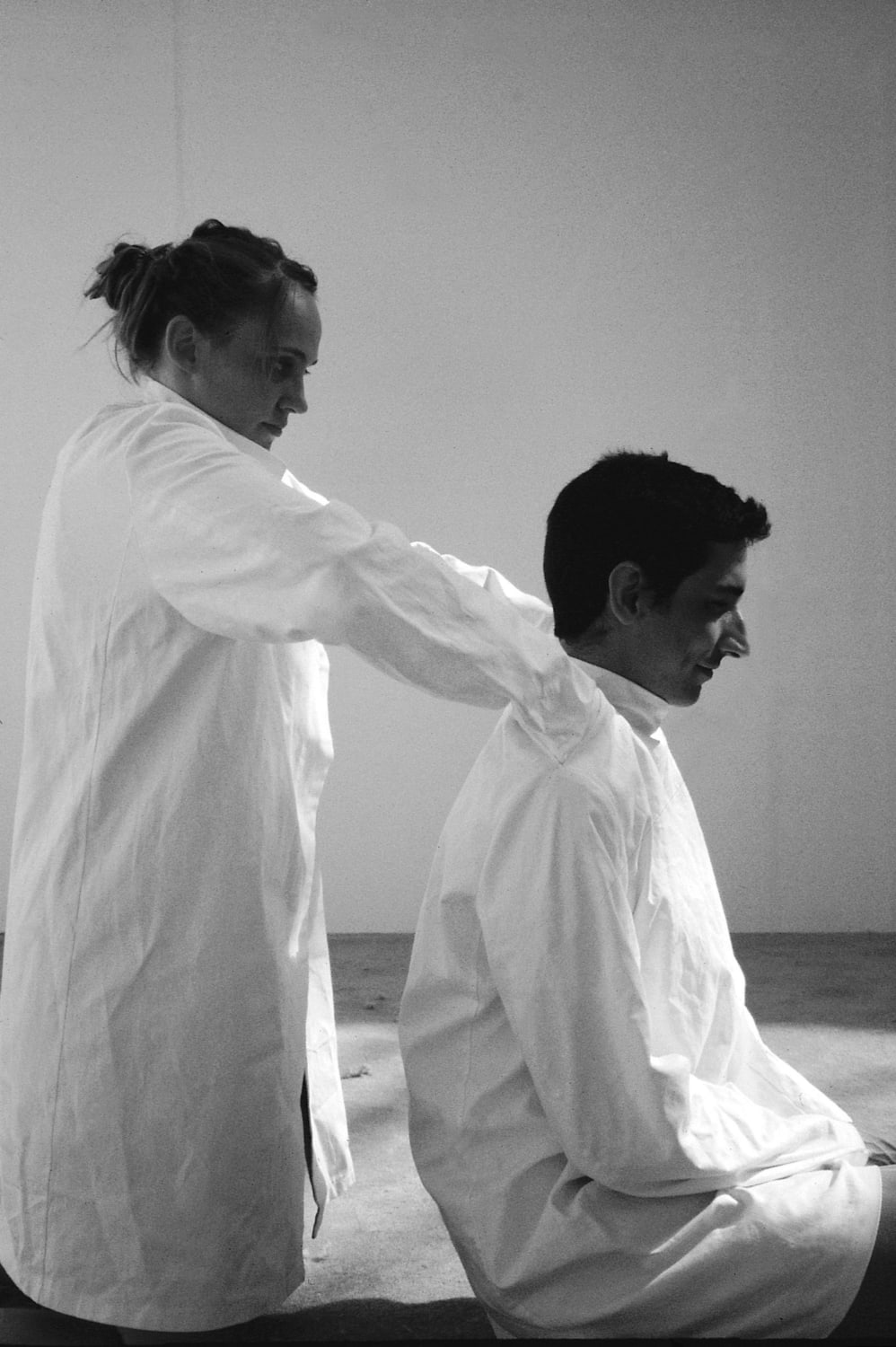ÓLÖF BJÖRNSDÓTTIR
‘I don’t think there is anything unique about human intelligence. All the neurons in the brain that make up perceptions and emotions operate in a binary fashion. We can some day replicate that on a machine. Eventually we’ll be able to sequence the human genome and replicate how Nature did intelligence in carbon-based system.’ (Bill Gates, Times, January, 1997)
But when a cream pie is hurled into that system and the 0’s and 1’s go on the blink, the system spits out an unlogic and new words are formed. Olöf Björnsdóttir’s work comprises actions and objects that act as the cream pie. A shattering of expectation, exploding the known, it protests loudly (in a whisper) against the way we know. She teases tradition as she reaches into history and tickles it under its arms. A small gesture, even futile, perhaps, but its power to shatter exists in that momentary glitch.
Olöf has created Woolenmaiden to do her piethrowing. Early on in her creation Woolenmaiden sought to perform small interventions in the world as we know it, her aim always to release creativity and open the imagination. For it is imagination that escapes the off/on off/on binary. Woolenmaiden intercepted our world with quiet actions and events in the peripheral landscape: an ecstatic leap at a country gate, a make-over given to a civic fence. These moments become modest monuments of insurrection, fugitive and nearly escaping detection, caught in time by the documenting photograph.
But over time Woolenmaiden began to create her own world, a world with its own internal logic and structure. This is a world of release which shows us our own limitations and reveals a malleability of logic. When the three-headed being shouts out her manifesto in protest and sounds at her most didactic, she is in fact at her most amorphous and uncontainable persona. She is – and so we are – compelled by the words: ‘I have to create’. Berries drop from the Woolenmaiden as treasures of this creation, fruits of the pie that mucks up the system In other works she moves across the landscape and drops ‘embryos’ in her wake. Like the berries these are the products of the collision between the imagination and the physical movements. Pressing, forming, unforming, prodding…these are expelled almost involuntarily. And one could imagine them to continue their shape shifting, their mutability, as they refuse a knowable geometry. In Woolenmaiden’s world you enter and are transformed, embraced and pummeled, unfixed and released.
Olöf’s recent works are an extension of this world but take a different approach. These seem to be less rooted in the Woolenmaiden persona as such, as though she has exceeded her own person to become a force. ‘Beneficial Squeezing’ arrives in part from Olöf’s own specific training in acupressure. She wears a white smock coat which shows us she’s the expert, the technician. But this white coat is joined in efficient and economical connection to her subject. Together they appear as a white statue, static and immobile, conjoined one in front of the other, the artist’s hands attached to her subject’s shoulders. It is a machine for massage. However, ‘Beneficial Squeezing’ produces what no other machine can produce. Instead it stimulates – or acts as a catalyst for – creativity, not so much producing as enabling something that exceeds its own economy. ‘Beneficial Squeezing’, like Olöf’s other works, refuses to uphold a static, rigid artwork and instead allows a plasticity of the boundaries of artwork to happen. The physicality of this series of works, too, is in keeping with much of her other works, as though the physical, bodily intervention – the kneading, poking and twisting of clay, or the game of handball played with highheeled shoes – allows for a sort of contusion of learned knowledge, releasing an involuntary and unpredictable flow of something which cannot be contained. That, for Olöf – for Woolenmaiden – is the imperative of the imagination, and it must resist ossification.
In my experience of Olöf’s work, I have a continuing sense of the humour which underlies and informs her practice. But it is not enough to say these works are simply funny. Rather, I experience that moment again and again that anything could happen. Like the pie on the face: there is a moment of suspended animation in the impact, a fraction of a second where you are blinded by the soft white cream, not knowing what has happened nor what is likely to happen next. Humour is at its most resonant and most dangerous in this gap. It exceeds the limits of expectation, explodes and convulses what we already know. And, if only slightly, it transforms us.

